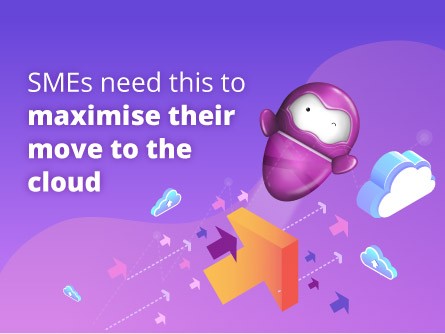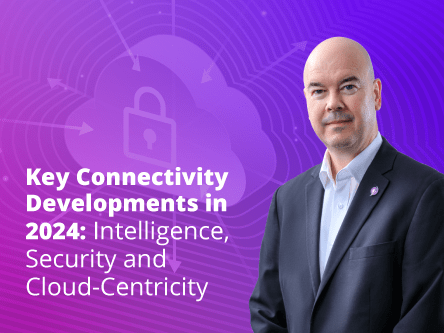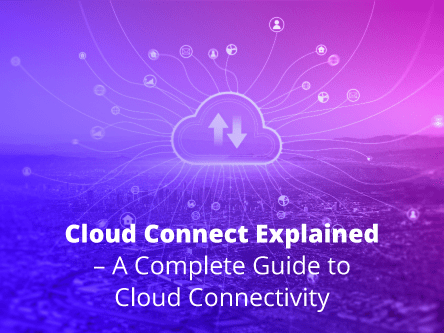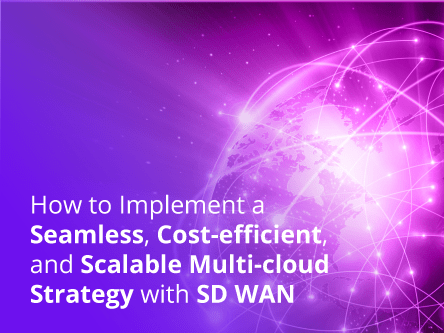The Gartner group has predicted that the worldwide market for cloud services which include Software-as-a-Service (SaaS), Platform-as-a-Service (PaaS) and Infrastructure-as-a-Service (IaaS) will almost double in another two years’ time.
Many small to medium sized enterprises (SMEs) may think that this market is only for the large players. As a result, they choose to adopt cloud platforms at their own pace while retaining and hybridising legacy infrastructure.
Yet, signs are increasingly pointing to the perils of this posture, because in recent years, digital transformation has intensified competition to digitalise.
For every SME that doesn’t “cloudify”, five other competitors will.
Ever heard of the term “Sink or swim”? In this era, it’s “rise up or drown”. Rise up to the cloud, that is.
The many reasons for doing so, and acting fast, are already self-evident and ubiquitous.
Organisations small or large need to increase agility and organisational productivity… or face imminent obsolescence and crises.
The Whys and Whats of Cloud
Some SMEs are worried that “cloud first” means “cloud always”.
As Gartner analysts say that, for some organisations, the long-term goal may just be to move all applications out of their data centres. For others, cloud-first may mean moving a subset of applications to the public cloud.
“Regardless of the approach, it is important to prioritise investments to advance the organisation’s use of cloud services”, the report confirms.
Naturally, businesses know only too well the benefits: improved operational efficiency, long-term cost savings, scalability; increased collaboration and access to a vast market of apps and DevOps opportunities, and so on.
What holds SMEs back are the usual resistance to change (leaving comfortable legacy infrastructure behind), adopting new paradigms of work, hiring new talent in an IT talent crunch, and the greater focus on security and customer obsession. All of the concerns are valid to some extent, but can and have been circumvented by so many SMEs before.
As with every complex problem, the best solutions are based on a deep understanding of individual corporate priorities and goals, solid planning, and leaving room for agile experimentation and learning as the change takes root.
However, all these cannot take place without the resolve to take some action rather than stagnate and overthink.
Cloud-centric but with a firm foundation
With hesitation and inaction out of the way, an SME is convinced to seriously consider a cloud-first strategy. Now it’s just a simple matter of engaging some network service providers to put the pieces together, right?
Wait!
Just as a cloud-first strategy is paramount, so is establishing the cloud connection strategy that drives everything down the line! It forms the basis of any sound cloud-always and cloud-first strategy because connectivity complexities dilute cloud benefits.
SMEs with cloud-first objectives must start any cloud strategy by investing in a firm foundation that secures their cloud interconnections. This would invariably involve a network-as-a-service (NaaS) paradigm which acts as the single point of connectivity to multiple cloud service providers (CSP) with managed network services, and importantly, network security.
- Is it important for your organisation to simplify connectivity via a single port that opens up friction-free access to more than just to Cloud services, but allows you move your services and location whenever you need?
- Do you need a high-performance, secure connection that can meet expansion needs from 1G to 100Gbps on demand?
- Does the service offer hundreds of global data centres that allow you connect to applications, data and users seamlessly anywhere as your business expands?
- Does your business growth plan include the need to access the world’s largest internet exchanges (IX) for peering without needing extra equipment or infrastructure?
- How important is last-mile connectivity to your cloud strategy in terms of connection to end users around the world?
Choosing the right network service provider can make a difference in the long term if scalability, granularity and growth potential are important. Whatever the connectivity decision, just rise up to the cloud soon!







